Australia is home to a remarkable diversity of raptors (also known as birds of prey), with 18 eagle and hawk species and six falcons distributed across its varied landscapes. These birds of prey are key indicators of ecosystem health, playing vital roles in controlling prey populations and maintaining ecological balance. From the far reaches of the outback to the coastal fringes, Australia's raptors adapt to a range of habitats, demonstrating remarkable hunting skills and survival strategies.
This article focuses on ten of Australia's most prominent birds of prey, their habitats, behaviours, and where they can be seen in the wild with leading tour operators.
10. Black Kite
The Black Kite (Milvus migrans) is known for its remarkable adaptability and scavenging behavior. It is frequently observed in flocks and thrives near bushfires, where it catches insects, small mammals, and reptiles fleeing the flames. This opportunistic feeding strategy, along with its ability to consume carrion, makes the Black Kite a key player in ecosystems by assisting in waste removal and nutrient cycling.
The Black Kite is one of the most widespread raptors globally and is found across northern and eastern Australia, including Kakadu & Arnhem Land, Far North Queensland, Mungo National Park and the Riverland. Its presence near wetlands, grasslands, and urban areas demonstrates its ecological versatility.
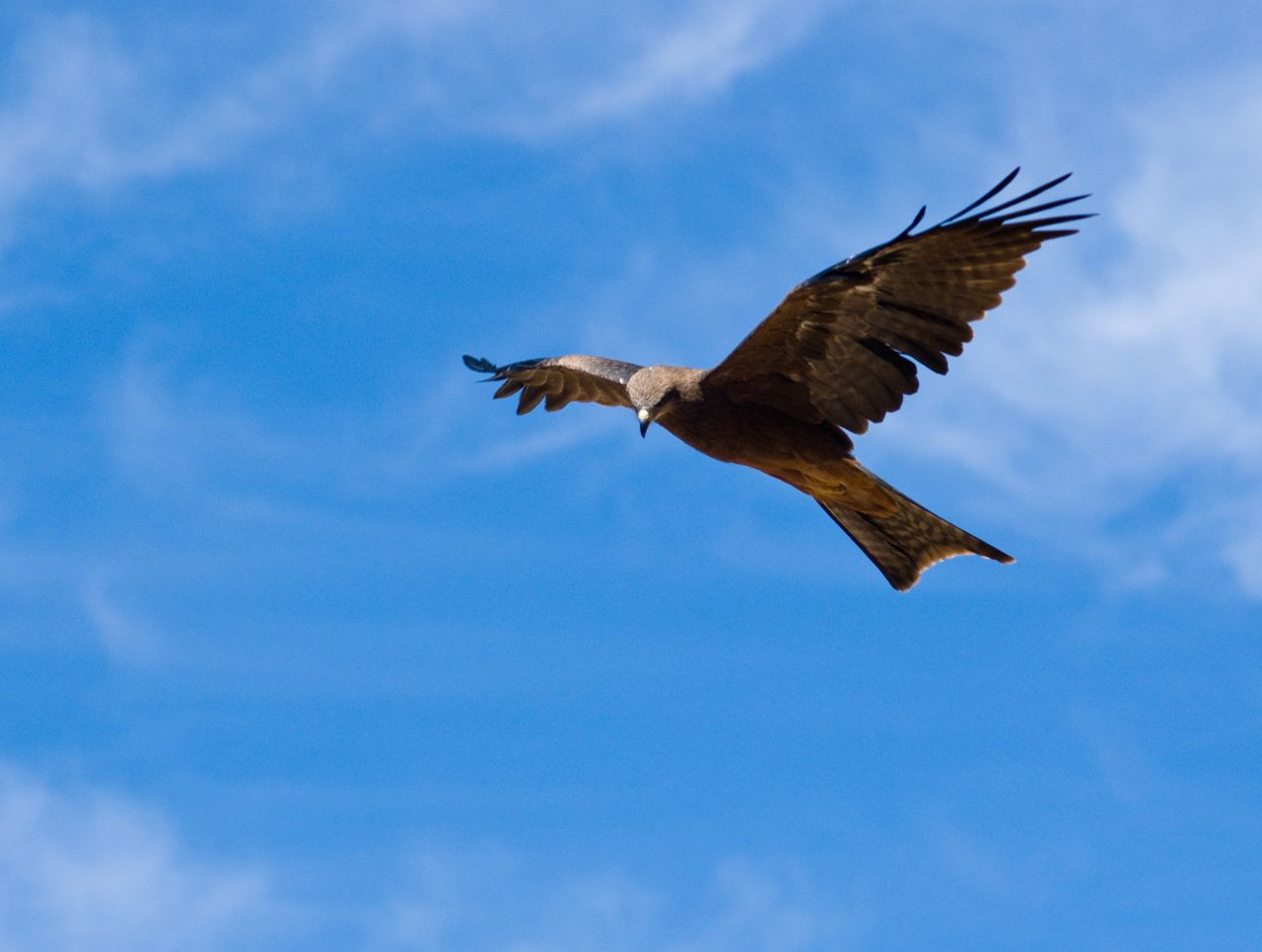
Where to see them
- Far North Queensland with FNQ Nature Tours (5 Day Birdwatching North Queensland)
- Kakadu & Arnhem Land with Lords Safaris (Kakadu Birding Tour)
- Mungo National Park with Echidna Walkabout Nature Tours (Private Mungo Outback Journey)
- Riverland with Murray River Trails (Murray River Safari)
- Eyre Peninsula with Australian Coastal Safaris (Southern Eyre Peninsula Birdwatching)
9. Peregrine Falcon
The Peregrine Falcon (Falco peregrinus) is famed as the fastest bird in the world, capable of reaching speeds exceeding 300 km/h during its high-precision hunting dives, known as stoops. It inhabits a wide range of environments, including coastal cliffs, open woodlands, and increasingly, urban areas where tall buildings mimic natural nesting sites. Its diet predominantly consists of birds caught mid-flight.
In Australia, the Peregrine Falcon is widespread, with populations found from Tasmania in the south to the Frankland Islands and Christmas Island in the north. Its adaptability enables it to thrive in diverse habitats, from remote wilderness areas to populated cityscapes.
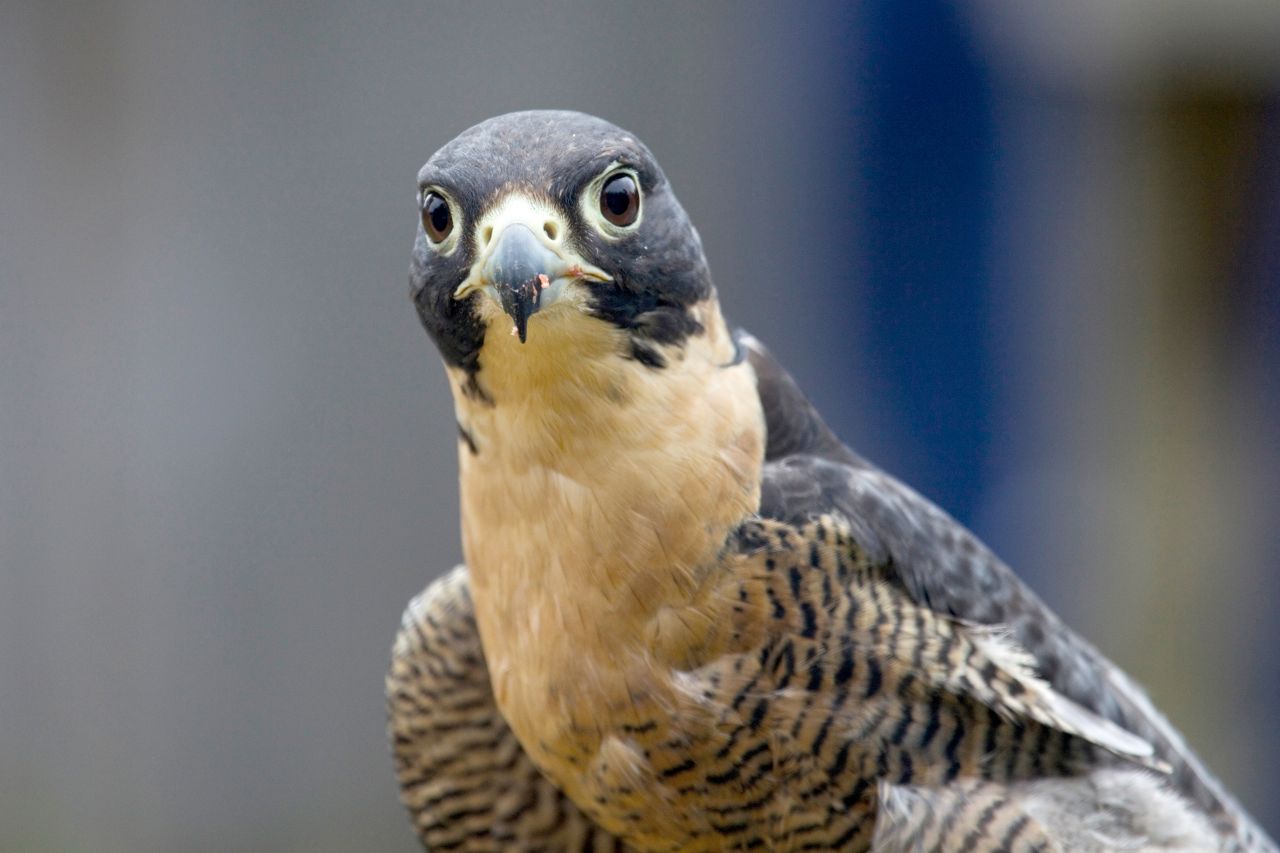
Where to see them
- Kangaroo Island with Exceptional Kangaroo Island (Kangaroo Island Birdwatching Tour)
- Riverland with Murray River Trails (Murray River Safari)
- Far North Queensland with FNQ Nature Tours (5 Day Birdwatching North Queensland)
- Tasmania with Premier Travel Tasmania (9 Day Western Wilderness & Wildlife Encounter)
- Eyre Peninsula with Australian Coastal Safaris (Southern Eyre Peninsula Birdwatching)
8. Nankeen Kestrel
The Nankeen Kestrel (Falco cenchroides) is one of Australia's smallest and most widespread raptors. It is commonly observed hovering over open grasslands, farmland, and roadside verges as it hunts for prey. Its diet primarily includes insects, small mammals, reptiles, and occasionally birds, making it an adaptable predator in diverse landscapes.
This species' distinctive light plumage and hovering hunting technique make it easily recognisable. It is commonly seen in regions such as Kangaroo Island, Christmas Island, East Gippsland, and the Eyre Peninsula. The Nankeen Kestrel's ability to adapt to human-altered environments, such as farmland, contributes to its widespread distribution.
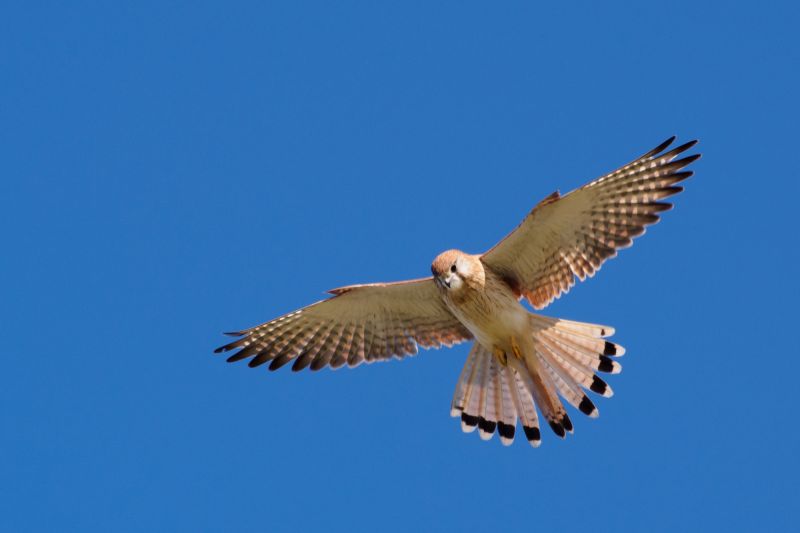
Where to see them
- Kangaroo Island with Exceptional Kangaroo Island (Kangaroo Island Birdwatching Tour)
- Far North Queensland with FNQ Nature Tours (5 Day Birdwatching North Queensland)
- East Gippsland with Echidna Walkabout Nature Tours (Private Mungo Outback Journey)
- Christmas Island with Indian Ocean Experiences (Christmas Island Birdwatching)
- Riverland with Murray River Trails (Murray River Safari)
- Eyre Peninsula with Australian Coastal Safaris (Southern Eyre Peninsula Birdwatching)
- Southern Highlands with Sydney Bespoke Tours (Sydney Wildlife Safari)
7. Whistling Kite
The Whistling Kite (Haliastur sphenurus) is a medium-sized raptor frequently associated with wetlands, rivers, and open woodlands. Its name comes from its distinctive, high-pitched whistling call, a familiar sound in many parts of Australia. The species is easily identified by its pale underwings, rounded tail, and buoyant flight.
This versatile bird is widespread across Australia and is particularly common in areas such as Kakadu & Arnhem Land, Hervey Bay, East Gippsland, Mungo National Park and the Riverland. It thrives in a variety of habitats, including wetlands, coastal regions, and farmland, where it forages for carrion, small mammals, fish, and insects. Its role as a scavenger makes it an important part of ecosystem health, helping to recycle nutrients.
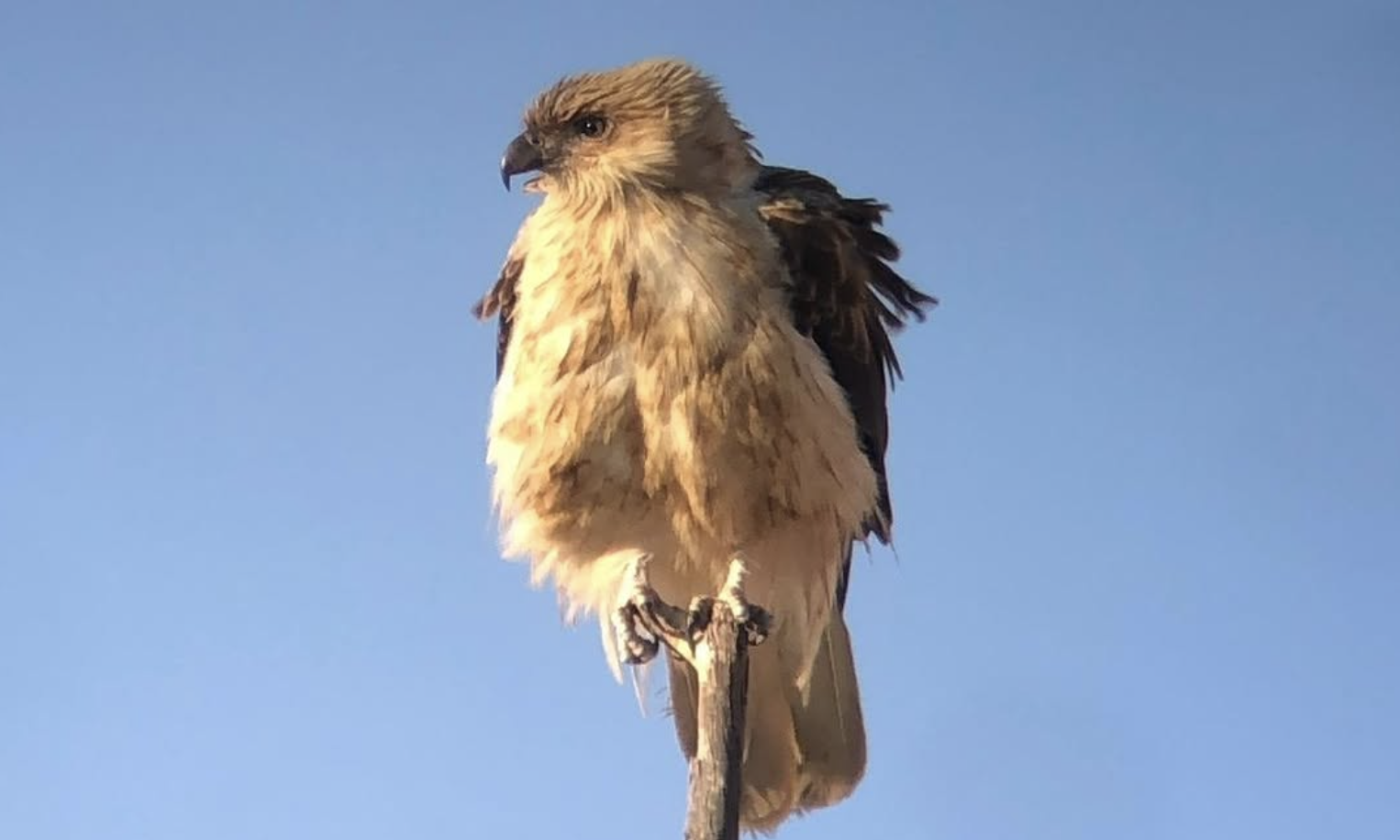
Where to see them
- Kakadu & Arnhem Land with Lords Safaris (Kakadu Birding Tour)
- Riverland with Murray River Trails (Murray River Safari)
- Southern Highlands with Sydney Bespoke Tours (Sydney Wildlife Safari)
- Far North Queensland with FNQ Nature Tours (5 Day Birdwatching North Queensland)
- East Gippsland with Echidna Walkabout Nature Tours (Private Mungo Outback Journey)
- Hervey Bay with Pacific Whale Foundation (Hervey Bay Private Charter)
- Mungo National Park with Echidna Walkabout Nature Tours (East Gippsland Wildlife Journey)
6. Brown Goshawk
The Brown Goshawk (Accipiter fasciatus) is a medium-sized, agile raptor well-suited to navigating dense forests and woodlands. It is characterised by its brown back, rufous chest, and pale underparts. This species relies on stealth and speed to ambush prey, primarily targeting small birds and mammals, though it occasionally hunts reptiles and insects.
The Brown Goshawk is widely distributed across Australia, including regions such as Tasmania, Far North Queensland, the Riverland and East Gippsland. Its preference for wooded habitats, including forests, riparian zones, and urban green spaces, aligns with its hunting strategy of surprise attacks from concealed perches.
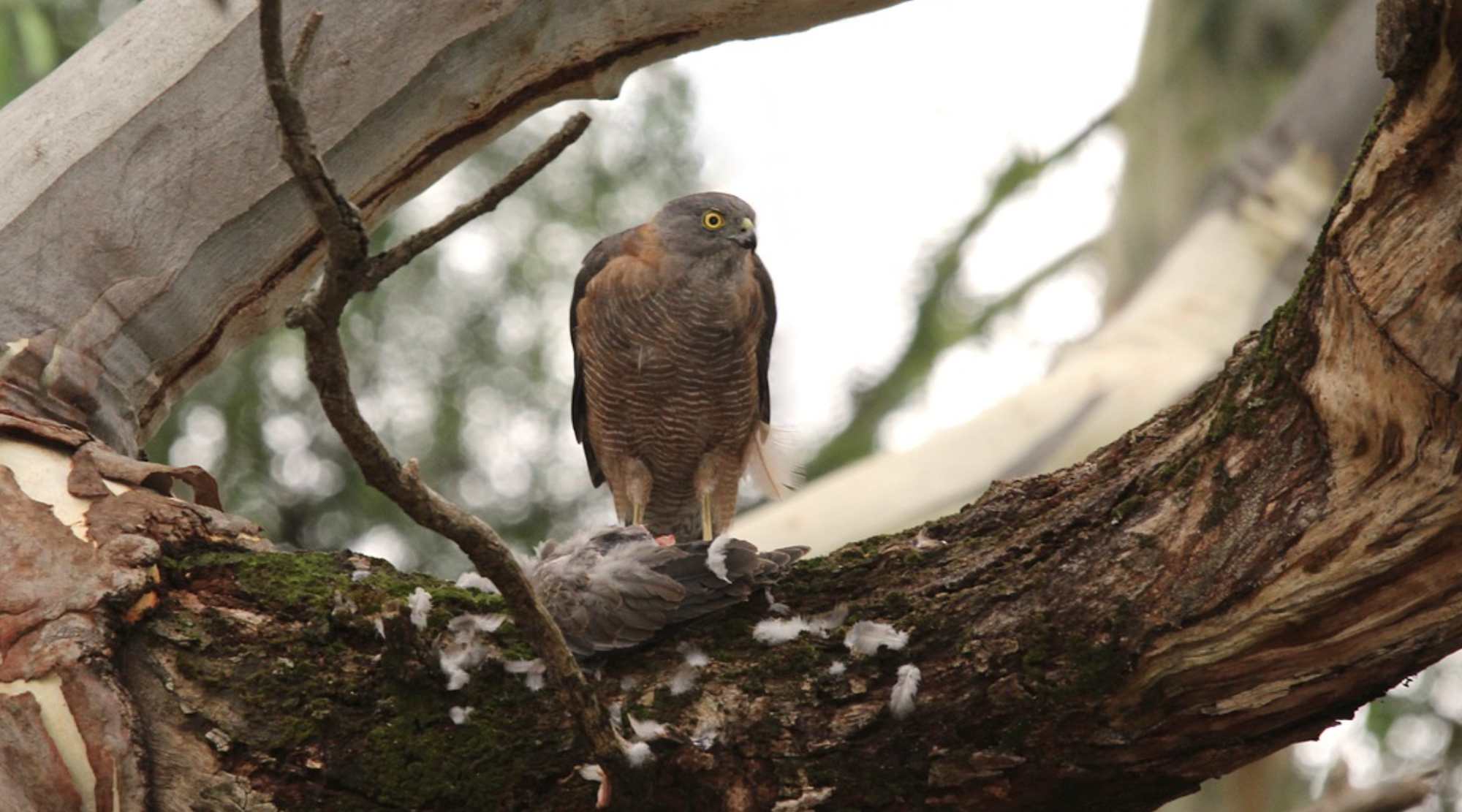
Where to see them
- Kakadu & Arnhem Land with Lords Safaris (Kakadu Birding Tour)
- Far North Queensland with FNQ Nature Tours (5 Day Birdwatching North Queensland)
- Tasmania with Premier Travel Tasmania (9 Day Western Wilderness & Wildlife Encounter)
- Maria Island with The Maria Island Walk (The Maria Island Walk)
- East Gippsland with Echidna Walkabout Nature Tours (Private Mungo Outback Journey)
- Riverland with Murray River Trails (Murray River Safari)
- Eyre Peninsula with Australian Coastal Safaris (Southern Eyre Peninsula Birdwatching)
5. Osprey
The Osprey (Pandion haliaetus) is a medium-to-large raptor specialized in fish predation, inhabiting coastal regions, estuaries, and large inland water bodies. It is easily identified by its striking plumage—white underparts contrasted with dark upperparts and a distinctive dark eye stripe. The Osprey's hunting technique involves dramatic feet-first dives to catch fish, its primary diet.
Ospreys are widely distributed across Australia's coastlines, favouring rugged cliffs, estuaries, and islands. Notable locations for observing this species include Kangaroo Island, Bremer Bay, Shoalwater Islands, Ningaloo & Exmouth, the Eyre Peninsula, Hervey Bay, and the Frankland Islands. Nesting primarily occurs on tall trees, cliff ledges, or human-made structures, with nests often reused and expanded over multiple breeding seasons.
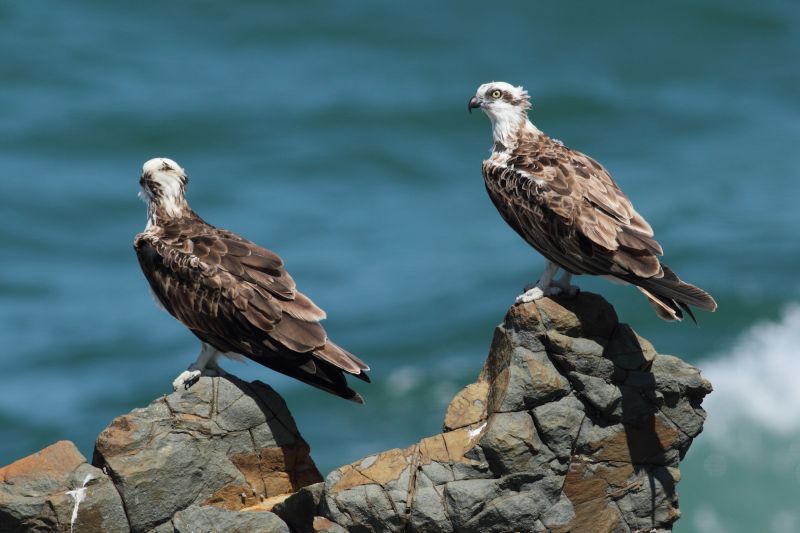
Where to see them
- Eyre Peninsula with Australian Coastal Safaris (Southern Eyre Peninsula Birdwatching)
- Kangaroo Island with Exceptional Kangaroo Island (Kangaroo Island Birdwatching Tour)
- Frankland Islands with Frankland Islands Reef Cruises (Frankland Islands Reef Cruises Day Tour)
- Bremer Bay with Naturaliste Charters (Bremer Canyon Killer Whale Expedition)
- Hervey Bay with Pacific Whale Foundation (Hervey Bay Private Charter)
- Shoalwater Islands Marine Park with Perth Wildlife Encounters (Dolphin, Sea Lion & Penguin Cruise)
4. Brahminy Kite
The Brahminy Kite (Haliastur indus) is a medium-sized raptor easily recognized by its striking chestnut plumage and contrasting white head and breast. A frequent sight along tropical and subtropical coastlines, it is often observed gliding gracefully over estuaries, mangroves, and tidal flats, where it scavenges and hunts for prey. Its diet consists of fish, crustaceans, and small mammals, with occasional carrion.
This species is predominantly found along Australia's northern and north-eastern coastlines. It thrives in diverse habitats such as Far North Queensland, Kakadu & Arnhem Land, the Frankland Islands, and Hervey Bay. The Brahminy Kite is particularly associated with wetlands and coastal regions where its aerial foraging and distinctive whistling calls are familiar sights and sounds.
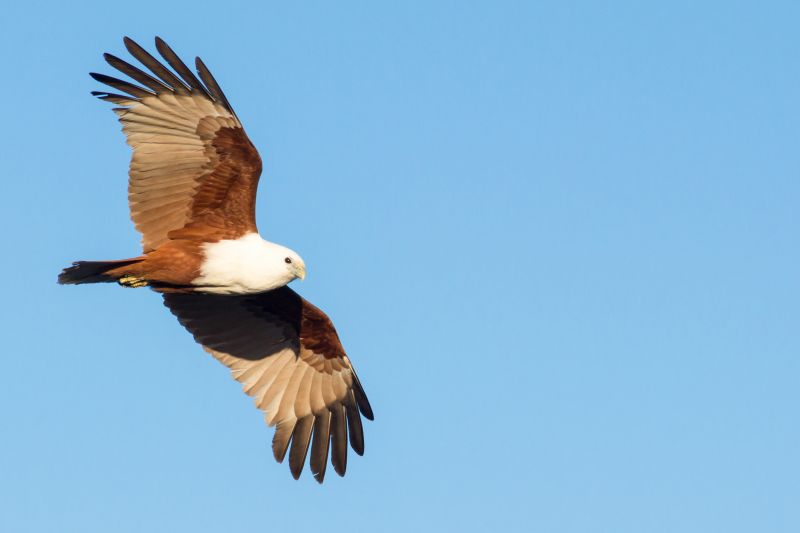
Where to see them
- Far North Queensland with FNQ Nature Tours (5 Day Birdwatching North Queensland)
- Kakadu & Arnhem Land with Lords Safaris (Kakadu Birding Tour)
- Hervey Bay with Pacific Whale Foundation (Hervey Bay Private Charter)
- Frankland Islands with Frankland Islands Reef Cruises (Frankland Islands Reef Cruises Day Tour)
3. Black-shouldered Kite
The Black-shouldered Kite (Elanus axillaris) is a small, striking raptor easily identified by its bright red eyes, white plumage, and black wing patches. Known for its hovering behaviour, this bird is often seen suspended in midair, scanning the ground for prey. Small mammals, particularly rodents, form the primary component of its diet, making it an effective natural pest controller in agricultural areas.
This species inhabits open grasslands, farmland, and savanna throughout Australia, adapting well to human-altered landscapes. Frequently sighted in East Gippsland, Kangaroo Island, Mungo National Park, Far North Queensland, and the Southern Highlands, the Black-shouldered Kite is most active during dawn and dusk when hunting conditions are optimal. Its preference for open spaces allows for easy observation in these regions.
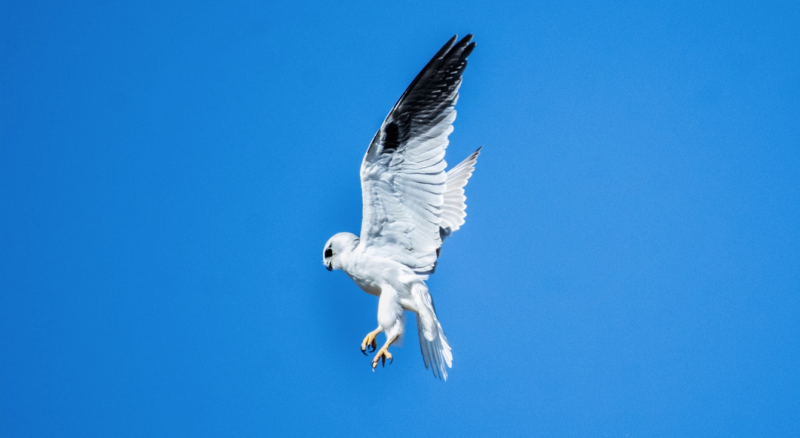
Where to see them
- Kangaroo Island with Exceptional Kangaroo Island (Kangaroo Island Birdwatching Tour)
- Far North Queensland with FNQ Nature Tours (5 Day Birdwatching North Queensland)
- Kakadu & Arnhem Land with Lords Safaris (Kakadu Birding Tour)
- East Gippsland with Echidna Walkabout Nature Tours (Private Mungo Outback Journey)
- Riverland with Murray River Trails (Murray River Safari)
- Southern Highlands with Sydney Bespoke Tours (Sydney Wildlife Safari)
- Eyre Peninsula with Australian Coastal Safaris (Southern Eyre Peninsula Birdwatching)
2. White-bellied Sea-Eagle
The White-bellied Sea-Eagle (Haliaeetus leucoryphus) is a large raptor found in coastal and inland water habitats throughout Australia. Easily identified by its striking white head, underparts, and tail, it contrasts with its dark wings and back. This bird is known for its majestic flight, often soaring high before diving to capture fish, birds, or small mammals from the water's surface.
White-bellied Sea-Eagles are typically found along coastal cliffs, river systems, and large inland lakes and wetlands. They prefer habitats near water bodies such as those found on Kangaroo Island, Hervey Bay, the Eyre Peninsula, Maria Island, East Gippsland, and the wetlands of Kakadu & Arnhem Land. Their strong association with water is reflected in their diet, which primarily consists of fish, although they will also hunt small birds and mammals when fish is less available.
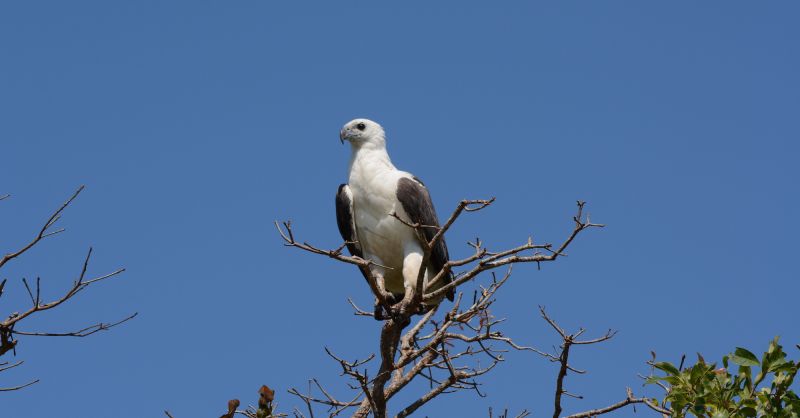
Where to see them
- Eyre Peninsula with Australian Coastal Safaris (Southern Eyre Peninsula Birdwatching)
- Kangaroo Island with Exceptional Kangaroo Island (Kangaroo Island Birdwatching Tour)
- Kakadu & Arnhem Land with Lords Safaris (Kakadu Birding Tour)
- Maria Island with The Maria Island Walk (The Maria Island Walk)
- East Gippsland with Echidna Walkabout Nature Tours (Private Mungo Outback Journey)
- Hervey Bay with Pacific Whale Foundation (Hervey Bay Private Charter)
1. Wedge-tailed Eagle
The Wedge-tailed Eagle (Aquila audax) is Australia's largest raptor, known for its long, broad wings and iconic wedge-shaped tail. This powerful bird is found throughout mainland Australia and Tasmania, where it inhabits a variety of landscapes, including open country, woodlands, and forested areas.
Wedge-tailed Eagles are widely distributed across Australia, from the coastal plains to the arid inland, and they are also present in Tasmania. These eagles are most often observed in open landscapes where they can hunt large mammals, such as rabbits and wallabies, or scavenge carrion. Key observation sites include Maria Island in Tasmania, East Gippsland, Southern Highlands, Far North Queensland, and Kangaroo Island, where they soar high over their territories.
The subspecies found in Tasmania, Aquila audax fleayi, is of particular conservation concern. It has a limited distribution and is critically endangered, with fewer than 200 breeding pairs remaining. The decline in this subspecies is mainly attributed to habitat loss, predation by invasive species, and human-related hazards such as poisoning, collisions with powerlines, and wind turbines.
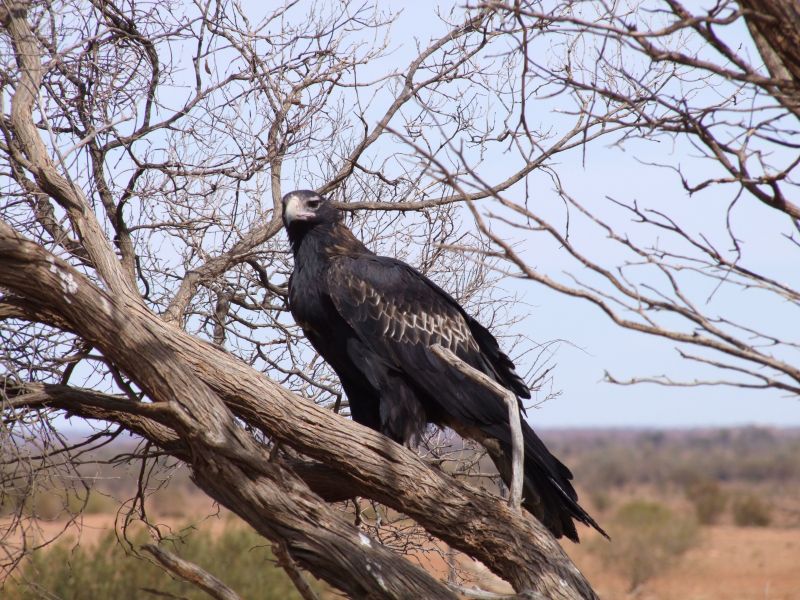
Where to see them
- Kangaroo Island with Exceptional Kangaroo Island (Kangaroo Island Birdwatching Tour)
- Far North Queensland with FNQ Nature Tours (5 Day Birdwatching North Queensland)
- Kakadu & Arnhem Land with Lords Safaris (Kakadu Birding Tour)
- Mungo National Park with Echidna Walkabout Nature Tours (East Gippsland Wildlife Journey)
- East Gippsland with Echidna Walkabout Nature Tours (Private Mungo Outback Journey)
- Riverland with Murray River Trails (Murray River Safari)
- Tasmania with Premier Travel Tasmania (9 Day Western Wilderness & Wildlife Encounter)
Australia's birds of prey are vital components of the country's ecosystems, showcasing remarkable adaptability across diverse habitats. Observing these raptors in the wild offers valuable insights into their behaviours and the environments they inhabit. Guided tours across Australia provide excellent opportunities to view these species, often while contributing to their conservation.

